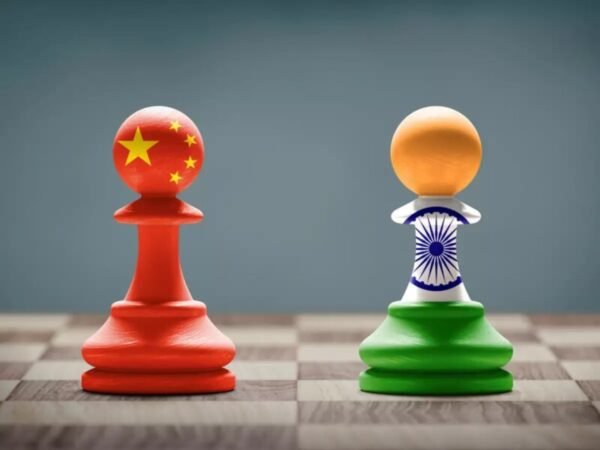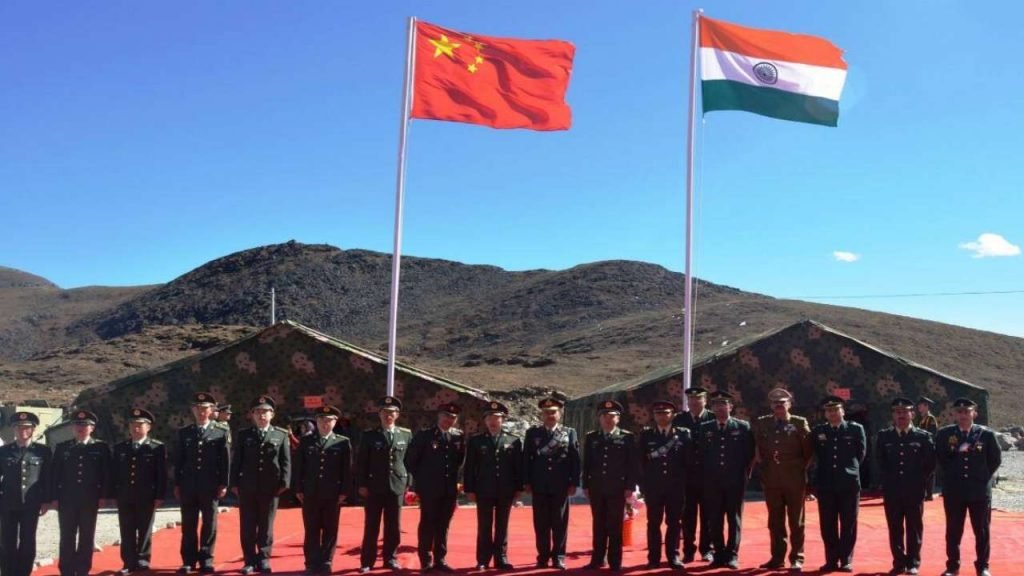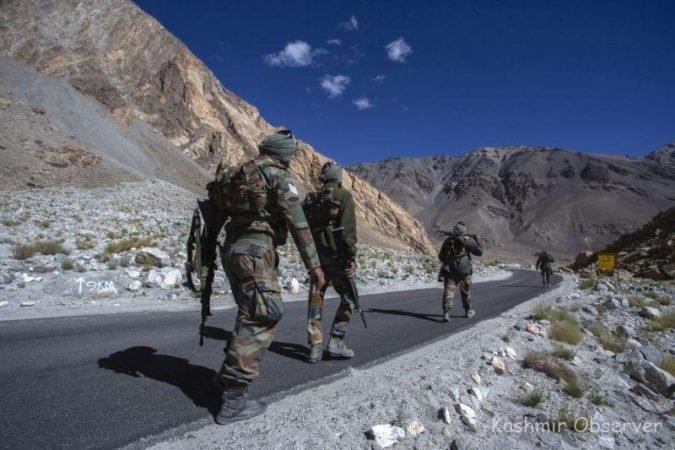Sixteenth round of negotiations between China and India

China had become well-versed within the craft of trade negotiations as noted by Dr. Zhang Xiangcheng, the previous Director-General of the Division on WTO Affairs of MOFCOM and current Deputy Permanent Representative of China’s WTO mission, it’s naive to simply draw its interests along developing country lines. China should attempt to form alliances with different countries on an issue-by-issue basis. it’s hard to blame China for being selfish, as many other developing countries don’t view China as a true friend. As justification for his or her request, they cited various alleged “trade-distorting practices” by China, which “have allowed China to drop prices for textile and apparel products by the maximum amount as 75 percent, and have given China an unassailable and unfair advantage in world markets for textiles and clothing.”
Thus, China began to adopt a practical approach to the negotiations. On the one hand, because the largest exporter, China shares many interests with developed countries. One example is trade facilitation. While many developing countries are against the inclusion of the difficulty, given its position together of the top exporters in the world, it’s actually in China’s interest to push for the inclusion of trade facilitation in the WTO framework to make the customs processes of its exporting destinations more efficient and cheaper. As a rustic with a large low-income population, China also sympathises with the concerns of the many developing country members. this is often why China supports the demand by India that developing countries should be entitled to a list of special products that will be exempted from tariff cuts, also as a special safeguard mechanism that can deal with a surge in particular agricultural imports.

We argue that the matter of redefining ‘common yet differentiated responsibilities’ in a way which allows developing countries room to pursue their individual development goals while still achieving the necessary level of carbon mitigation is central to the debate. the selection of negotiating instruments, effective technology transfer and support , and other related issues are raised principally by China and India, and should also be raised by several other countries. In spite of some similarities and dissimilarities, there’s a scope for economic cooperation between India and China. Both countries are developing closer economic relations with one another and with the rest of the Asian countries through bilateral and regional agreements. Bilateral trade and investment between India and China are growing, indicating the existence of an enormous potential for economic cooperation. China’s entry into the WTO has provided new opportunities and challenges for both countries to determine cooperation in the areas of negotiations. China joined the WTO by undertaking many important commitments. India and China could take a standard stand in issues such as agriculture subsidies, trade-related aspects of property rights, trade facilitation, trade services and trade dispute settlement, to call but a few.
Prior to these developments, the 15th round of the Corps Commander-level meet was persisted March 11 in the backdrop of Russia’s invasion of Ukraine. On completion of the talks, Senior Colonel Wu Qian, spokesperson for the Chinese defence ministry, stated that “China and India have agreed to handle the border issue through negotiation and consultation but are firmly against interference from a third party”, possibly alluding to new-found intimacy within the Indo-US relationship as well as acknowledging India’s ability to take an independent stand, supported its own interests.
While China continues to take a position heavily in developing villages along the frontier in Tibet to assert its claims along the LAC, on the Indian side, the road connectivity to the LAC continues to be an explanation for concern, particularly in Arunachal Pradesh, which may impose limitations. As the world faces the economic consequences of the Russia-Ukraine conflict, the futility of continuous with stalemate on its western border should dawn on China. India’s rapid infrastructure development along the LAC, expanding military and trade ties with friendly nations of the Indo-Pacific region, and its growing stature within the comity of nations can no longer be ignored by the Chinese political leadership. The time is ripe for India to push hard and negotiate a mutually assured withdrawal plan for the restoration of pre-2020 positions during the upcoming round of talks. For durable peace in the region, sustained dialogue toward clear demarcation of the ill-defined 3,500-km border must continue.
India-China Relations
Before the advent of Western imperialism, India and China were great powers in Asia. With its unique tributary system, China had considerable influence and control on the periphery of its borders. China’s long history of dynastic rule made countries like Mongolia, Korea, parts of Indo-China, and Tibet accept China’s authority. Several empires and kingdoms extended their influence beyond their borders. This influence was political, economic, and cultural in both cases. As evident from the India-China relations, there was limited political and cultural interaction between the two in history. However, both countries built on a relationship during the mid-20th century. For a brief time, the slogan of ‘Hindi-Chini Bhai Bhai’ was quite famous

India, China conduct 16th round of talks
At quite four months, the gap between the 15th and 16th round of corps commander-level talks has been the longest ever since the standoff began in May 2020. The previous round of talks happened on March 11, to chill tensions at friction points along the Line of Actual Control (LAC) in eastern Ladakh in the backdrop of outstanding problems at Patrol Point-15 near Kongka La, Depsang Bulge in Daulet Beg Oldi sector and Charding Nullah Junction (CNJ) in Demchok sector being a detail in the ongoing negotiations, officials conversant in the matter said.
The talks began on the Indian side of the Chushul-Moldo meeting point and went on, lasting quite 12 hours. the newest military dialogue also came on the back of the Indian Air Force noticing Chinese air activity near LAC, with IAF chief saying that the air force was scrambling fighter jets whenever Chinese aircraft or remotely piloted aircraft systems came near the border. At quite four months, the gap between the 15th and 16th round of corps commander-level talks has been the longest ever since the standoff began in May 2020. The Indian Army and therefore the Chinese People’s Liberation Army held the 15th round of talks in March.
Despite disengagement of soldiers, the 2 armies held eight rounds of talks in 2020 with the first held in June of that year, five rounds in 2021, and have held three rounds of talks thus far this year. The border standoff between India and China, which has cast a shadow over the bilateral relationship, entered its third year in May 2022. India had on July 7 sought an early resolution of all outstanding issues on LAC, with external affairs minister S Jaishankar pressing his Chinese counterpart Wang Yi to finish the disengagement of troops in order to restore peace and tranquillity in border areas.
‘Both sides agreed to work out a mutually acceptable resolution’
Indian and Chinese military commanders met on Sunday to finish the stalemate in negotiations to resolve the more-than-two-year-long military stand-off along the Line of Actual Control (LAC) in eastern Ladakh. The Prime Minister Narendra Modi’s government approved and facilitated the 14th Dalai Lama’s travel from the seat of Tibetan Government-in-Exile at Dharamshala in Himachal Pradesh to Ladakh for a month-long sojourn. India’s investigating agencies launched a search against two smartphone manufacturing companies of China, for alleged concealment and customs duty evasion. The negotiations between the 2 sides had resulted in mutual withdrawal of troops by both sides from some of the face-off points along the LAC – from the Galwan Valley in June 2020, from both banks of Pangong Tso in February 2021 and from Gogra Post in August 2021

‘No immediate outcome’, and the way forward
No immediate resolution is predicted as far as disengagement in Ladakh is concerned following the 16th round of corps commander-level talks between India and China, The Print has learnt. The delegations will convey the proposals to their respective higher authorities before engaging in further exchanges, sources said, adding that the difficulty of Demchok was also discussed. each side have agreed that there will be no further increase in the presence of troops deployed in Demchok. They had a frank and in-depth exchange of views in this regard, keep with the guidance provided by the State Leaders to work for the resolution of the remaining issues at the earliest. The joint statement released after the meeting said the “The two sides reaffirmed that the resolution of remaining issues would help in restoration of peace and tranquility along the LAC within the Western Sector and enable progress in bilateral relations,” the statement said. “In the interim, the 2 sides agreed to maintain the security and stability on the ground in the Western Sector. the 2 sides agreed to stay in close contact and maintain dialogue through military and diplomatic channels and work out a mutually acceptable resolution of the remaining issues at the earliest.”
“India’s strategy and approach during disengagement talks with China are based on directions of Prime Minister Narendra Modi that we will not allow an inch of our territory to be taken by anyone. It is result of our firm resolve that we have reached the situation of an arrangement”. Defence Minister Rajnath Singh said during a session in Parliament.
Conclusion
Shanghai Cooperation Organization (SCO) and the group of BRICS (Brazil, Russia, India, China, and South Africa). It is argued that both are formed by big rapidly growing economies. This provides a good potential of economic cooperation and as India and China being a part of the same, this will strengthen the relations between both countries. India’s EAM, S. Jaishankar, gave a speech at a university in Thailand where he stated that relations between India and China were going through “an extremely difficult phase” and that an “Asian Century” seemed unlikely unless the two nations found a way to “join hands” and start working together. But somehow the long-going negotiations between them would affect the affirmation of the Asian centuries and ongoing India, China border tensions may not have any immediate impact on on the trade relations.


















